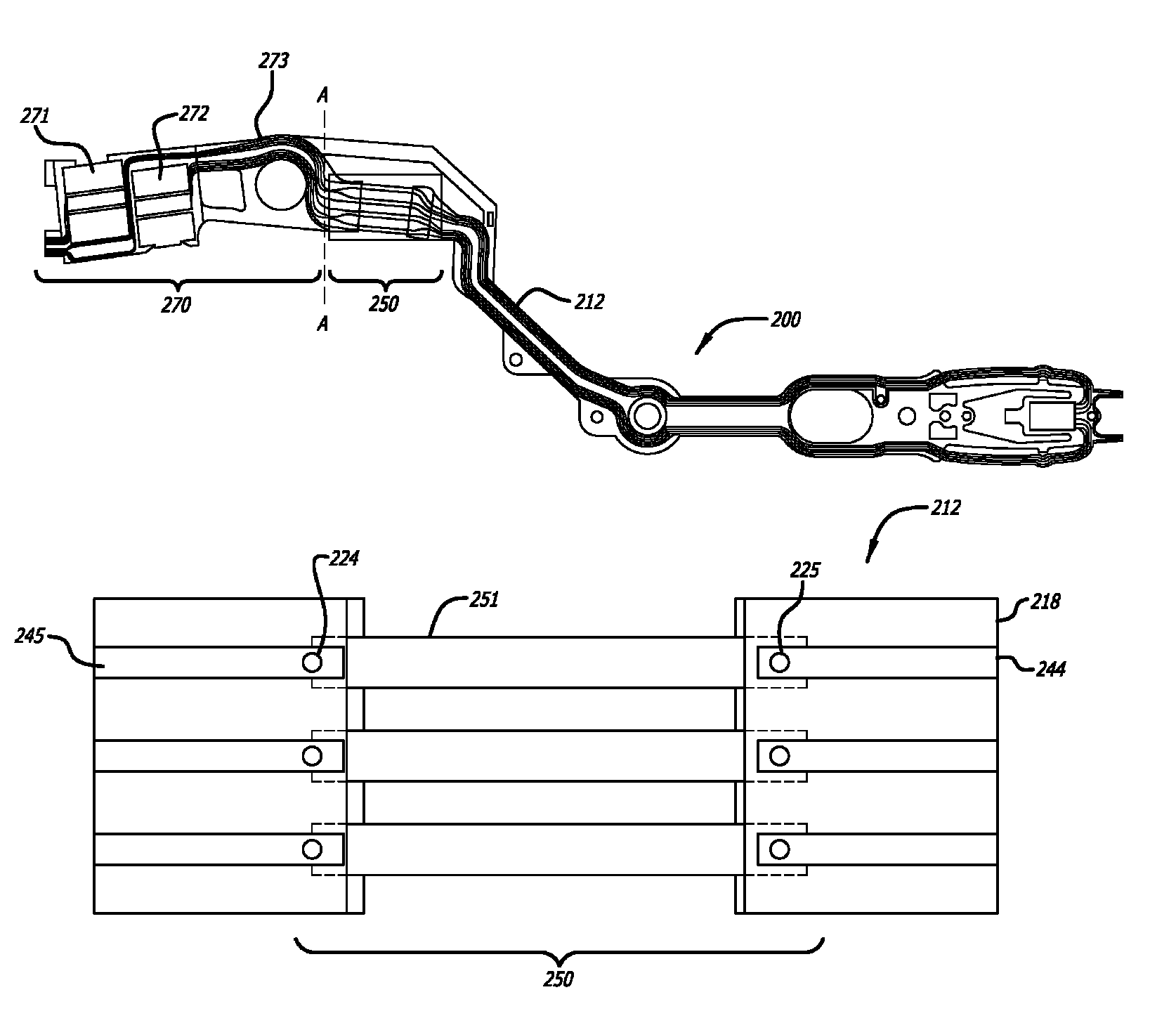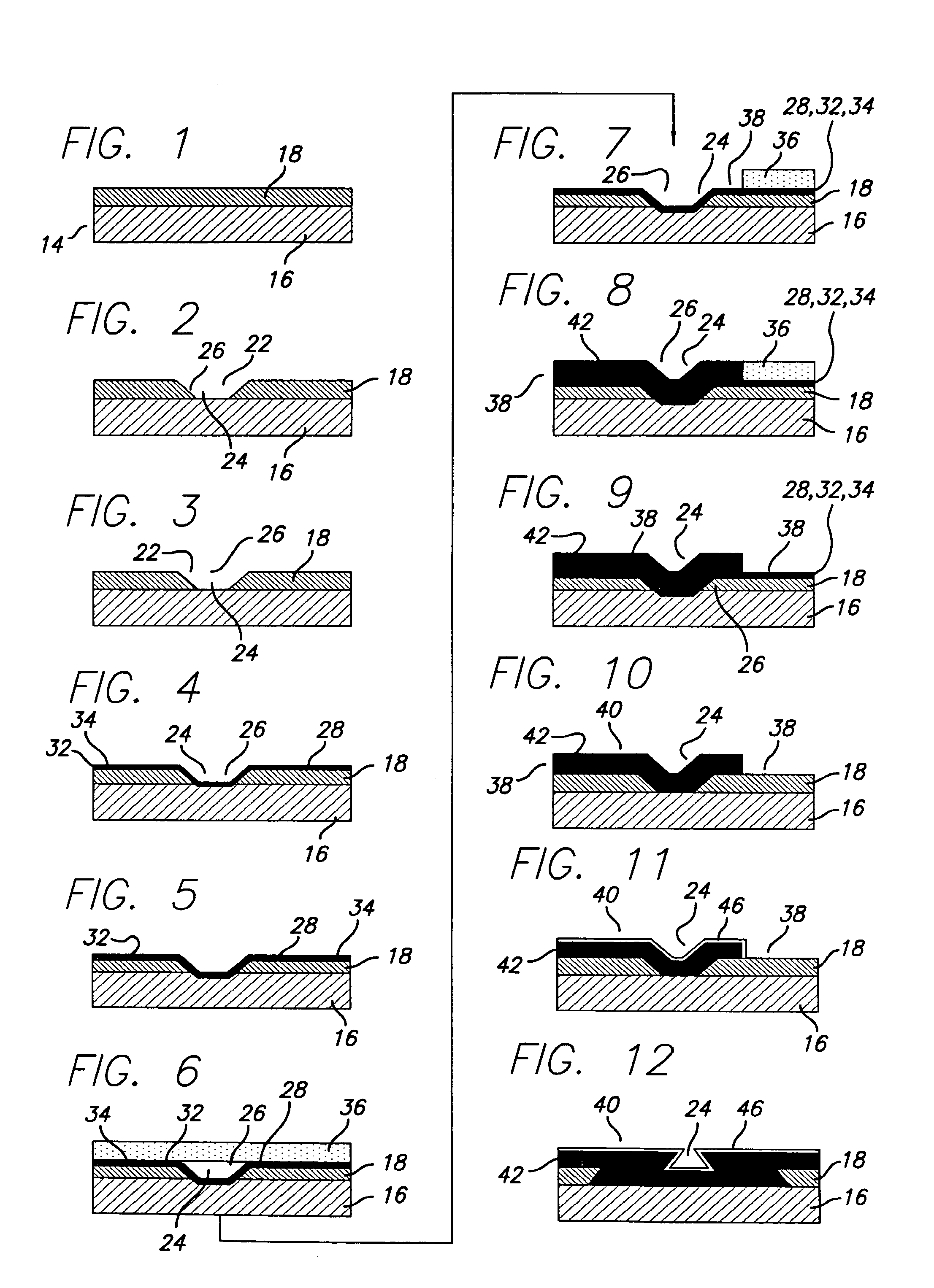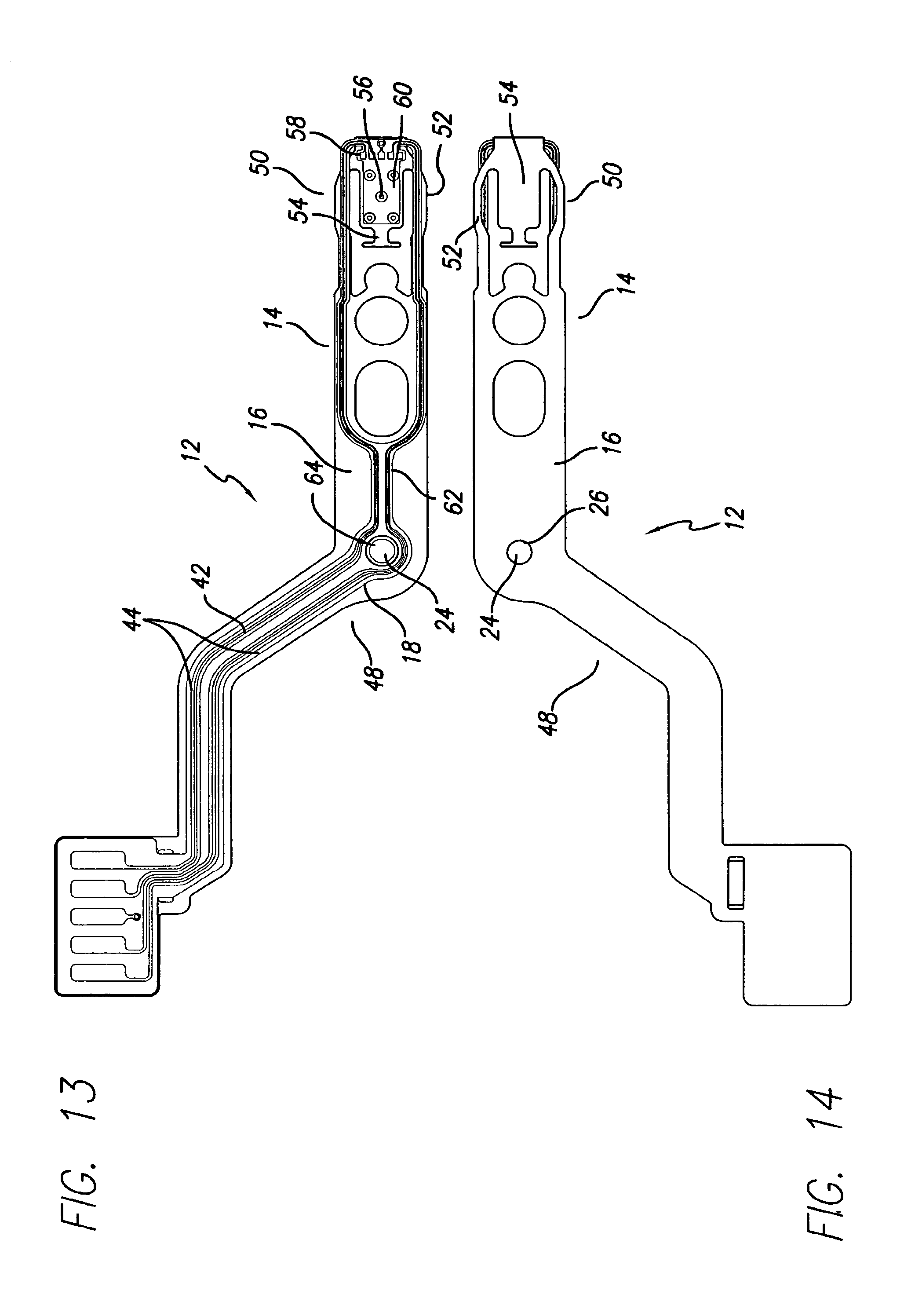Resilient flying lead and terminus for disk drive suspension
a flying lead and disk drive technology, applied in the direction of instruments, support for heads, record information storage, etc., can solve the problems of slider performance dependent on a good grounding, degraded approach, and poor electrical connection quality, so as to improve the electrical grounding of the slider and achieve optimal performance of the hard disk drive slider. , the effect of improving the electrical connection
- Summary
- Abstract
- Description
- Claims
- Application Information
AI Technical Summary
Benefits of technology
Problems solved by technology
Method used
Image
Examples
Embodiment Construction
[0038]The invention provides a simpler and more economical solution than those criticized above for manufacturing suspension interconnects having a reliable electrical connection between the circuit components to be grounded and the grounding layer of a stainless steel foil by creating a metallized via between them. It is well known that there are inherent difficulties in making electrical connections to stainless steel. In the invention, however, these difficulties are avoided or obviated by using a sputtered tie layer such as chromium that can be used to attach a conductor, e.g. copper, attached to a component, e.g. a slider, to a ground such as stainless steel. FIGS. 1-11 show the invention process flow for creating a metal via between the copper circuit and stainless steel layers on a hard disk drive suspension interconnect. FIGS. 15-27 show the invention process flow for creating a metal via between the copper circuit and stainless steel coated with conductive copper layer.
[003...
PUM
| Property | Measurement | Unit |
|---|---|---|
| thickness | aaaaa | aaaaa |
| thickness | aaaaa | aaaaa |
| thickness | aaaaa | aaaaa |
Abstract
Description
Claims
Application Information
 Login to View More
Login to View More - R&D
- Intellectual Property
- Life Sciences
- Materials
- Tech Scout
- Unparalleled Data Quality
- Higher Quality Content
- 60% Fewer Hallucinations
Browse by: Latest US Patents, China's latest patents, Technical Efficacy Thesaurus, Application Domain, Technology Topic, Popular Technical Reports.
© 2025 PatSnap. All rights reserved.Legal|Privacy policy|Modern Slavery Act Transparency Statement|Sitemap|About US| Contact US: help@patsnap.com



